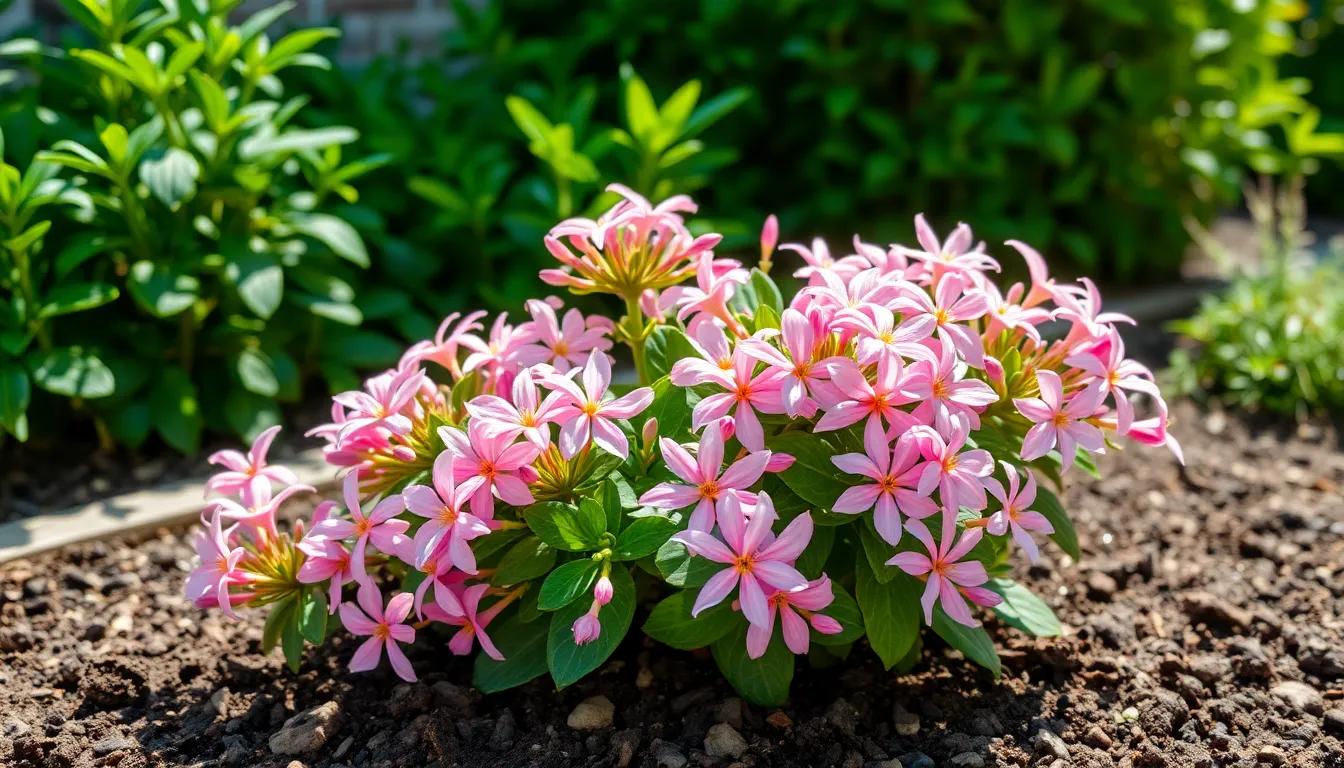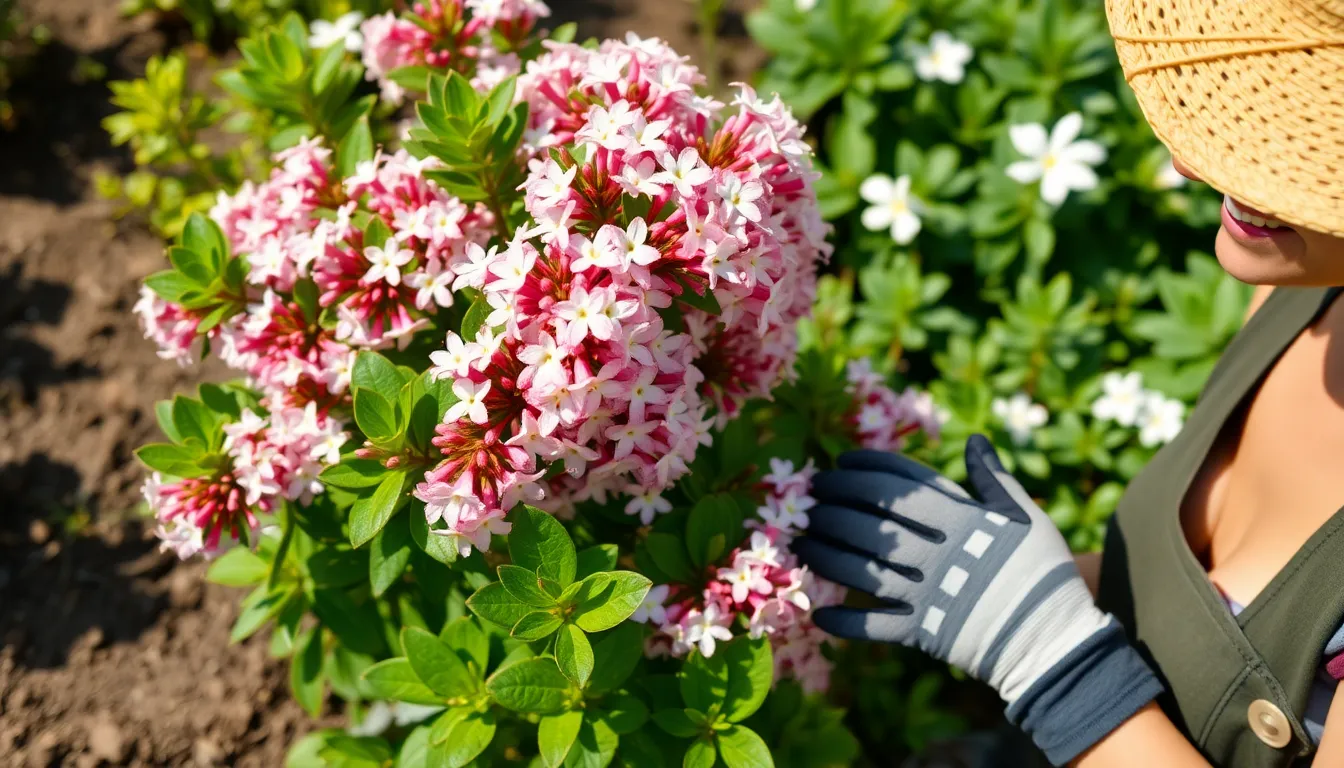Daphne plants are like the divas of the garden world—stunningly beautiful but a little high-maintenance. With their fragrant blooms and lush foliage, they can steal the spotlight in any landscape. But don’t let their charm fool you; these beauties require some TLC to thrive. If you’ve ever wondered how to keep your daphne happy and healthy, you’re in for a treat.
daphne plant care
Daphne plants belong to the Thymelaeaceae family, known for their stunning beauty and delightful fragrance. These evergreen shrubs can reach heights between 2 to 6 feet, depending on the species. Their leaves vary in size and shape, contributing to the aesthetic appeal of gardens.
Daphne blooms typically occur in early spring or late winter, delivering clusters of small flowers in shades of white, pink, or purple. These flowers emit a strong scent, attracting pollinators like bees and butterflies. Various species, such as Daphne odora and Daphne genkwa, showcase unique characteristics and growth habits.
Planting daphne requires careful consideration of location and soil type. Ideal conditions include well-drained soil enriched with organic matter. Full sun exposure promotes optimal growth, but some daphne varieties tolerate partial shade. Adequate airflow around the plants minimizes disease risk.
Watering schedules for daphne plants should focus on moderation. They prefer consistently moist soil, avoiding waterlogged conditions which can cause root rot. During the growing season, a thorough watering once a week often suffices. Mulching around the base retains moisture and suppresses weeds.
Pruning enhances the shape and health of daphne plants. It’s advisable to perform light pruning immediately after flowering. This technique encourages bushier growth and maintains an attractive appearance. Fertilizing with a balanced, slow-release formula can support overall vigor.
Daphne plants thrive best in zones 4 to 9. Protecting them from extreme temperatures and frost is essential. Despite their beauty, these plants may prove challenging, demanding attention and care. Understanding these fundamental aspects can ultimately lead to a flourishing daphne garden.
Essential Daphne Plant Care Tips

Daphne plants thrive with specific care practices. Understanding these essential tips enhances plant health and bloom quality.
Soil Requirements
Daphne plants prefer well-draining soil that retains some moisture. A mixture of loamy soil and organic matter promotes healthy root development. Soil pH should remain slightly acidic to neutral, between 5.5 and 7.0. When planting, add compost or aged manure to enrich the soil. Avoid heavy clay or overly sandy soils, as these conditions may cause root problems.
Light Preferences
Daphne enjoys full sun for at least six hours daily. Some varieties tolerate partial shade, but blooms may be fewer in less sunlight. Morning sun followed by afternoon shade can protect plants from harsh conditions. Ensure nearby taller plants do not block sunlight from reaching the daphne. Too much shade may weaken the plants and affect their growth.
Watering Guidelines
Moderate watering maintains optimal moisture levels for daphne plants. It’s important to keep the soil consistently moist but not soggy. Water deeply when the top inch of soil feels dry. Avoid overhead watering to prevent leaf diseases. During dry spells, providing additional water ensures healthy foliage and more blooms.
Common Pests and Diseases
Daphne plants, though stunning, succumb to various pests and diseases that affect their health. Recognition of these issues allows for prompt management.
Identifying Pest Issues
Aphids often appear as small, green or black insects clustered on new growth. Spider mites can cause speckling on leaves, indicating web formation is likely. Scale insects resemble small, brown or gray bumps on stems and leaves. Recognizing these pests early prevents further damage. Additionally, leaf spots may signal fungal infections such as botrytis blight, impacting foliage and overall vigor.
Preventive Measures
Regularly inspecting plants leads to early detection of pests and signs of disease. Implementing good hygiene practices, like removing leaf debris, reduces disease risk. Choosing disease-resistant Daphne varieties strengthens resilience. Proper watering techniques minimize stress and deter fungal growth. Ensuring adequate air circulation around the plants prevents overcrowding, which fosters disease spread.
Pruning and Maintenance
Pruning plays a vital role in maintaining the health and appearance of Daphne plants. Light pruning occurs after blooms fade, allowing for bushier growth. It’s essential to remove dead or damaged stems to promote air circulation and prevent disease.
Regular maintenance includes monitoring for pests and diseases. Early detection of issues like aphids or spider mites enables effective treatment, ensuring the plant remains robust. Inspecting plants frequently helps identify problems before they escalate.
Fertilization supports growth and vitality. Applying a balanced, slow-release fertilizer enhances nutrient availability, contributing to overall plant health. Timing is crucial; fertilize during active growth in spring for optimal results.
Irrigation practices also affect maintenance routines. Deep watering helps establish a strong root system, while restricting watering when topsoil is moist prevents waterlogging. Watering in the morning allows for better absorption and reduces the risk of fungus.
Mulching benefits Daphne plants significantly. Organic mulch retains soil moisture, suppresses weeds, and regulates soil temperature. A 2- to 3-inch layer of mulch maintains a consistent moisture level necessary for healthy growth.
Daphne plants thrive with attention to these maintenance aspects. Consistent care leads to vibrant blooms and lush foliage. Prioritize pruning, monitoring, fertilizing, and watering to cultivate a flourishing plant. Proper maintenance transforms Daphne into a stunning focal point in any garden.
Conclusion
Caring for Daphne plants requires dedication and attention to detail. With the right conditions and consistent maintenance, these stunning shrubs can thrive and bring beauty to any garden. Their fragrant blooms and lush foliage not only enhance landscapes but also attract beneficial pollinators.
By focusing on proper soil, light exposure, and watering practices, gardeners can create an ideal environment for Daphne plants. Regular monitoring for pests and diseases, along with thoughtful pruning and fertilization, ensures these plants remain healthy and vibrant. With a little effort, Daphne can become a cherished centerpiece in any outdoor space.

